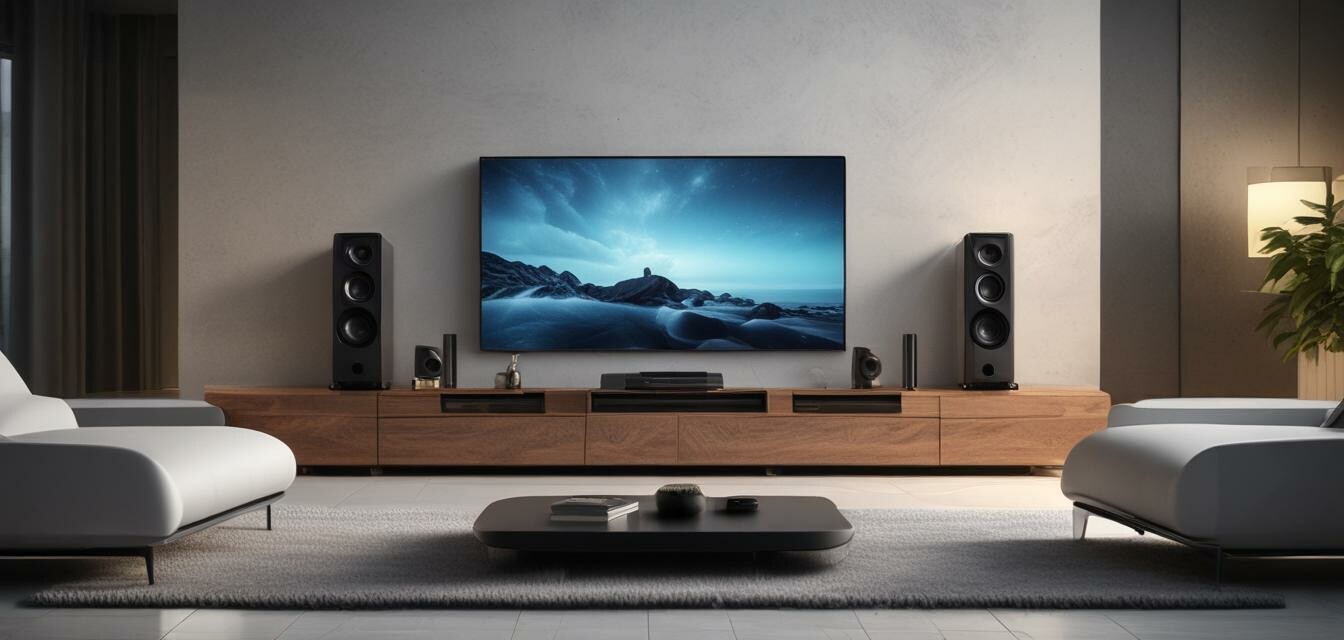
Emerging Trends in Home Audio for 2025
Key Takeaways
- The home audio landscape is evolving, driven by advancements in technology.
- Sustainability is becoming a top priority for consumers in audio equipment.
- Wireless technology continues to dominate both sound quality and consumer convenience.
- Smart home integration is expected to surge, harmonizing audio devices with home ecosystems.
- Customization in sound profiles is pushing audio brands to innovate.
The landscape of home audio equipment is continually transforming as new innovations and consumer preferences come to the forefront. With 2025 on the horizon, several key trends are set to shape the home audio experience, emphasizing quality, sustainability, and connectivity. Let's delve into these emerging trends and what they mean for the average consumer.
1. Rise of Smart Home Integration
As smart homes become the norm, the integration of audio devices within smart ecosystems is becoming increasingly vital. Consumers are looking for sound systems that can connect seamlessly with other smart devices, allowing for:
- Voice-activated controls for easy operation.
- Integration with smart thermostats, lighting, and security systems.
- Enhanced home automation features to synchronize audio playback with various activities.
2. Emphasis on Sustainability
In response to growing environmental concerns, many consumers are prioritizing sustainability in their purchasing decisions. Emerging audio equipment trends encompass:
- Use of recycled materials in speaker manufacturing.
- Energy-efficient devices that reduce power consumption.
- Brands committing to sustainable practices across production and packaging.
3. Expanding Wireless Technology
Wireless technology remains at the forefront of home audio advancements. Its advantages include:
- Elimination of messy cables enhances aesthetic appeal and convenience.
- Improved sound quality through advanced transmission protocols, like Bluetooth 5.0 and Wi-Fi 6.
- More flexible speaker placement options, allowing for personalized sound arrangements.
Table: Comparison of Wireless Audio Technologies
| Technology | Range | Streaming Quality | Number of Devices |
|---|---|---|---|
| Bluetooth 5.0 | Up to 240 meters | High-quality audio | Up to 7 devices |
| Wi-Fi 6 | Up to 100 meters | Lossless audio | Unlimited devices |
| AirPlay 2 | Up to 100 meters | High-definition audio | Multiple streams |
4. Customization of Sound Profiles
Today's consumers are more discerning about sound quality. As a result, manufacturers are striving to offer:
- Adjustable EQ settings that allow users to personalize their audio experience.
- Applications that enable detailed sound customizations for different listening environments.
- AI-driven audio enhancement tools to adapt sound quality based on user preferences.
5. Enhanced In-home Entertainment Systems
Home theaters are becoming increasingly popular, with consumers wishing to replicate the cinema experience at home. This trend includes:
- Integration of surround sound systems featuring advanced sound processing.
- Increased demand for immersive audio experiences, including 3D sound technology.
- Flexibility in speaker design, allowing for wireless and compact solutions that fit various room layouts.
Technological Innovations to Look Out For
As we look forward to 2025, several technological innovations are expected to improve home audio experiences further. These include:
- Spatial Audio: Offering immersive sound experiences by placing sounds in a three-dimensional space.
- Artificial Intelligence: Continuously learning and adapting to user preferences for personalized sound.
- Smart Calibration: Automatic sound adjustment based on room acoustics and speaker placement.
Conclusion
The home audio industry is on the brink of transformative changes that will redefine the listening experience. As consumers become more aware of their audio preferences and push for sustainable solutions, brands must strive to innovate in technology and design. Staying informed about these trends can help you make better choices when shopping for home audio equipment.
Pros
- Innovative features enhance user convenience.
- Sustainable materials appeal to eco-conscious consumers.
- Wireless technology offers more freedom in speaker placement.
Cons
- Changing technology may lead to compatibility issues.
- Initial investment in premium systems can be high.
- Some users may find new technologies overwhelming.
For more insights about the latest in audio equipment, check out our other articles on news and trends, buying guides, or browse our selection of home theater systems and soundbars today!